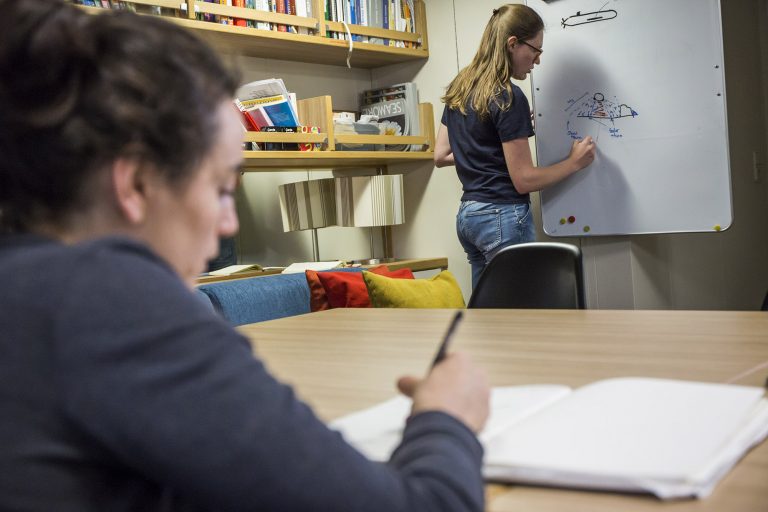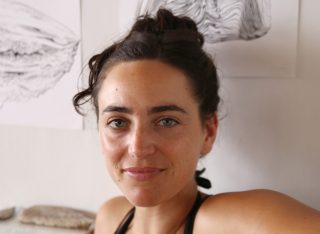The last week has been a path with a significant learning curve for me. This has been in respect to the concepts within the specific research of this expedition, as well as understanding oceanographic research in general, and the relationships between art and science.
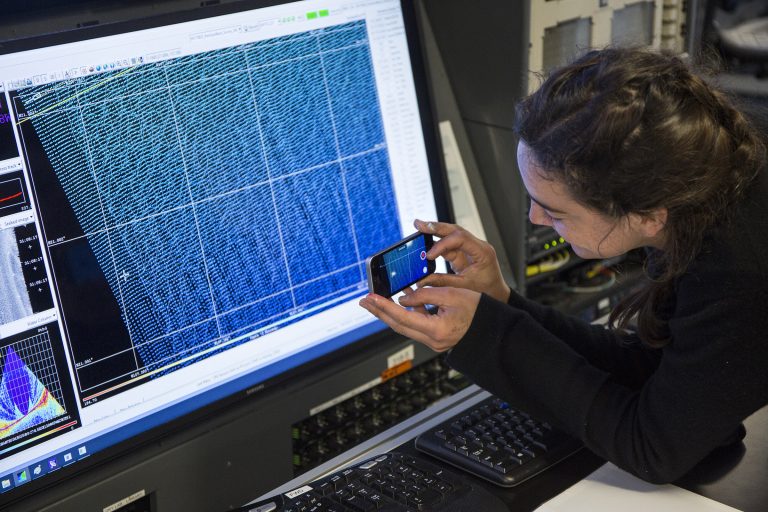
At the beginning of my time on Falkor, before data collection had begun, I began exploring around the ship, getting to know people and piecing together the constant different preparations going on – all the while, making illustrations based on the characters and activities. In the future, I would like to develop these, piecing them together into a larger print or animation that reveals the way that all of these different activities weave together, enabling the ship to function and the scientific research to take place. I think that this human element is important to consider alongside the detail of the scientific research taking place on board.
In comparison, the rest of the work that I have been making is much more based on the scientific research taking place. As soon as mapping began, I became immersed in observing and trying to understand the different processes involved, including the way that they are layered together. This involved learning alongside the science students and talking over ideas with the scientists, students and technicians.
I set up a workspace in the dry lab where data was being collected and processed. This enabled me to keep up to date with the research being carried out and to pick up wider information and ideas about it. At the same time, it allowed those involved in the research to come and see my drawings – their interpretations of the art and their input was vital in forming the directions that my work took.
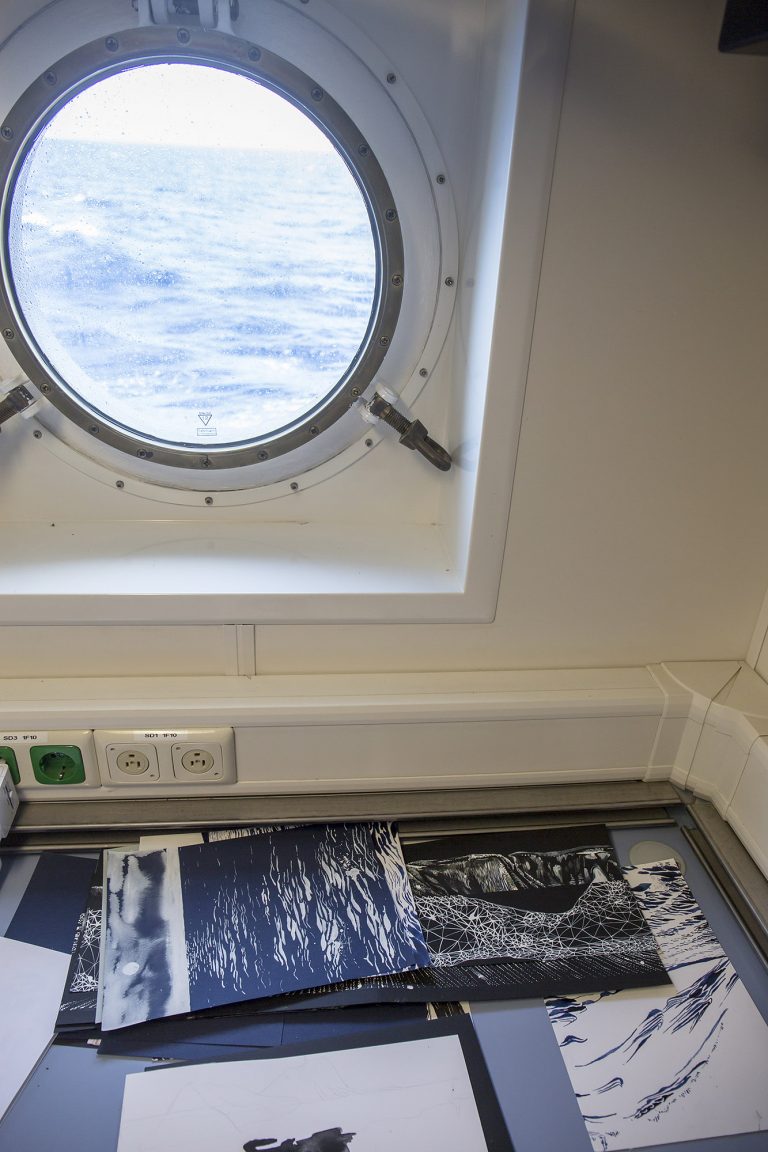
First I developed drawings for a print that brings together the different visualizations and interpretations of the data being collected and processed. The process of making this helped me to learn about the way that data is layered together, and I hope that the finished piece will help others to learn about it as well. My aim was to give a sense of the different levels of very specific data that has to be ‘nested’ together in order to see the wider picture on the research as a whole.
Drawing Inspiration
My process of drawing allows the computer-generated imagery, images of physical samples, and images of the environment to be layered together into one piece. The intention through this is to make an artwork that from a distance might look like a collection of patterns, but with a short description can reveal the scientific process used in this research. It was fascinating to observe the way that meaning is derived from interpreting a collection of complex numbers and patterns!
After a certain point of drawing, observing, and learning, I gained enough understanding to be able to tie together different elements and concepts, putting them into a wider context. With that, I could begin to develop work that looks to tell the overall story behind the research in a layered, atmospheric, and less literal way.
Currently I am working on drawings of the sea floor inspired directly from half processed bathymetric maps. These drawings show a seascape sitting within a dark void and populated with a variety of structures and stories. Through these works, I hope to reflect the ideas behind the research and deep sea exploration in general, including: the fact that we know only a small amount about the ocean floor; the way that wide areas of the sea floor are a sparsely populated in comparison; the densely populated shallow waters that contain reefs of living corals growing in layers the ancient drowned corals being studied.
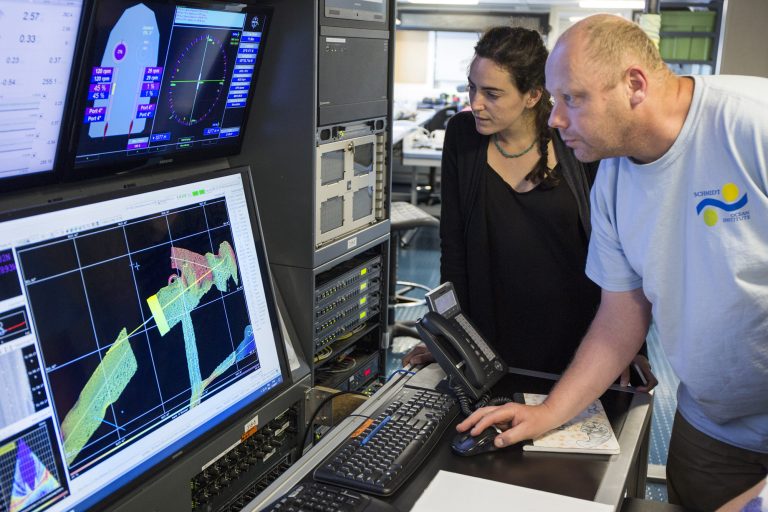
Parallel Approach
It has been fascinating to work on board Falkor in the knowledge that the research being carried out applies to the sea floor sitting directly beneath us, yet which we are unable to physically see. Applied with the knowledge that I have gained about this research through working alongside those onboard, it is interesting to realize the parallels in the scientific and artistic process. There are several similarities, including the important combination of both tools and concepts, the elements of trial and error, and the fact that both subject deal with intangible ideas that can only be fully made sense of after the artworks or research have been completed.
I am leaving the ship with a bag full of drawings that I am excited to develop into larger works. I feel like I have just touched the surface of oceanography and the potential for combining this with my art practice. I hope that the ideas and interests gained through my time aboard Falkor will continue to develop with future projects that I am involved in.
